You can reach the five hells in the Kannawa district by taking bus number 5 or 7 from Beppu Station. The ride takes about 15 minutes. Get off at the Kannawa Bus Terminal, and from there, you can walk to all five spots.
To visit the two remaining hells in Shibaseki, take bus 16 or 16A from Kannawa (about 5 minutes). The same bus goes to Beppu Station via Kamegawa. You can also use bus 26/26A in the opposite direction. Exploring by rental car is easy too—free parking is available at all the hells.
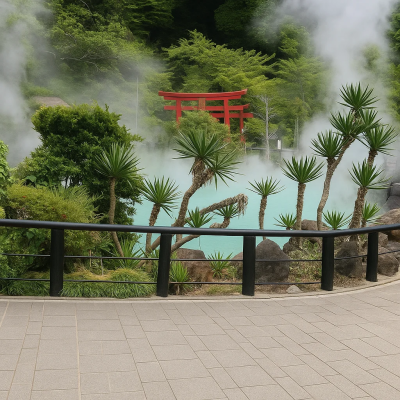
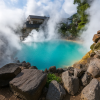
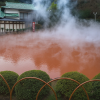
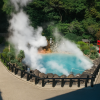
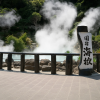
Jigoku Hells
The Jigoku Hells (地獄, jigoku) in Beppu are an extraordinary collection of seven hot springs, renowned for their dramatic visual appeal rather than their bathing opportunities. These geothermal wonders feature steaming ponds in vibrant hues, bubbling mud pits, and powerful hydrothermal activity, creating an otherworldly atmosphere that transports visitors to a surreal landscape. The Hells are not just hot springs—they are a mesmerizing natural spectacle, where the raw power of the Earth is on full display. Although some areas are developed for tourism, the beauty and awe-inspiring nature of the Hells remain unspoiled, offering a captivating experience for all.
Located across two distinct areas, the Jigoku Hells offer diverse experiences for visitors. Five of the Hells are situated in the easily accessible Kannawa district, known for its bustling atmosphere and tourist-friendly amenities. In contrast, the remaining two Hells are nestled in the quieter Shibaseki area, providing a more tranquil setting. Each Hell features its own unique characteristics, with pools ranging in color from cobalt blue to fiery red, ensuring that every stop offers a new and striking visual experience. Whether you're a photographer seeking to capture the beauty of the springs or a family exploring Beppu’s volcanic heritage, the Jigoku Hells are a must-visit destination that showcases the diverse and dynamic geothermal activity in the region.
The Jigoku Hells
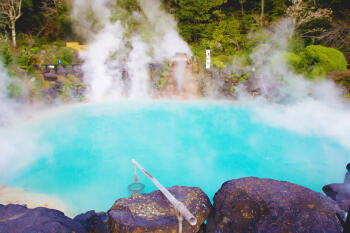
Kannawa District
Umi Jigoku, also known as the 'Sea Hell,' is famous for its beautiful blue boiling water. The large garden features smaller orange hells and a clear pond with lotus flowers, whose strong leaves can support small children.

Kannawa District
Shiraike Jigoku, also known as the 'White Pond Hell,' features a hot, milky water pond. The pond is surrounded by a lovely garden, and there is a small, old aquarium nearby.
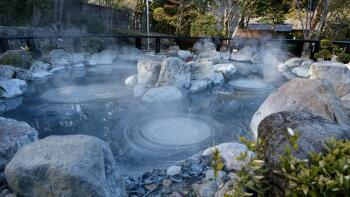
Kannawa District
Oniishibozu Jigoku is named after the mud bubbles that resemble bald monks' heads. There is also a foot bath with clear water. Next to it, you'll find a public bath with multiple pools for an additional 620 yen.
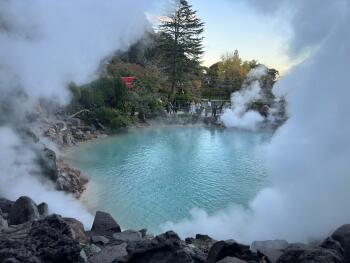
Kannawa District
Kamado Jigoku, also known as 'Cooking Pot Hell,' features boiling ponds and a statue of a demon cooking. Visitors can drink the hot spring water, relax in hand and foot baths, inhale the steam, and try snacks cooked by the hot spring.
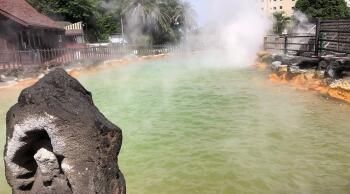
Kannawa District
Oniyama Jigoku, also known as 'Monster Mountain Hell,' is home to many crocodiles that are raised and kept on the premises.
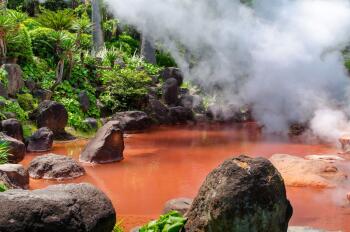
Shibaseki District
Chinoike Jigoku, or 'Blood Pond Hell,' features a pond with hot, red water. It’s a great spot for photos and also has a large souvenir shop.
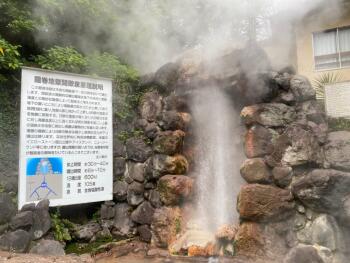
Shibaseki District
Tatsumaki Jigoku, known as 'Spout Hell,' features a geyser that erupts every 30-40 minutes for 6-10 minutes. A stone plate limits its height. There is also a short walking trail up the nearby forested hill.
Hours and Fees
- Opening hours
-
8:00 AM to 5:00 PM
- Closed
-
No closing days
- Entrance fee
-
It costs 450 yen to enter one hell, or 2,200 yen to visit all seven hells once within two days.
Buy combination ticket here →
Getting there
Resources
Reviews
There are no reviews